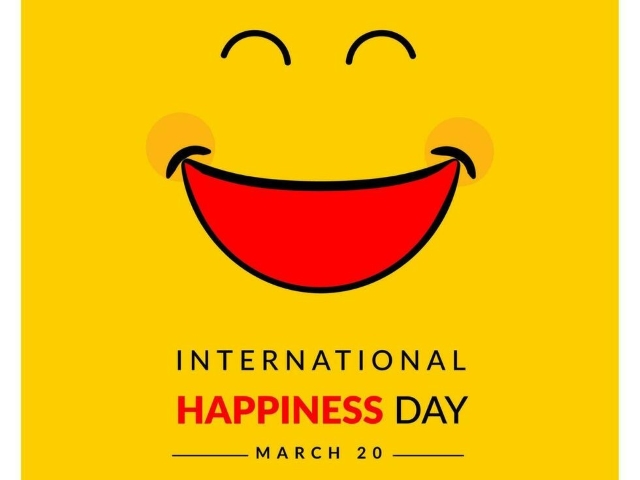Mục Tiêu Cho Năm Mới - New Year’s Resolutions
Lời hứa hoặc việc đặt mục tiêu cho một Năm Mới sẽ giúp chúng ta có định hướng rõ ràng, vậy làm thế nào để những mục tiêu của bạn đạt được đúng thời gian, hãy cùng chúng tôi tìm hiểu bài đọc sau. Bài đọc New Year’s Resolutions cung cấp kiến thức và từ vựng phổ biến về việc đặt mục tiêu năm mới, nội dung khá phổ biến trong các bài học TOEIC, khóa học IELTS, khóa học TOEFL iBT.
Các bạn học viên có thể đọc thêm bài phong tục đón chào Năm mới tại khắp nơi trên thế giới New Year’s Celebrations Around the World để bổ sung thêm kiến thức và từ vựng cho mình.
New Year’s Resolutions
A New Year’s resolution is a commitment that a person makes to one or more personal goals, projects, or the reforming of a habit. A key element to a New Year’s resolution that sets it apart from other resolutions is that it is made in anticipa-tion of the New Year and new beginnings. People committing themselves to a New Year’s resolution generally plan to do so for the whole following year.
Ý định kiên quyết cho Năm Mới là một cam kết của một người sẽ thực hiện một hoặc nhiều mục tiêu, dự án cá nhân, hoặc sửa đôi một thói quen. Yếu tố then chốt của một ý định kiên quyết cho Năm Mới khiến nó tách biệt khỏi các quyết tâm khác là nó được đưa ra trước thềm Năm Mới và những khởi đầu mới. Những người cam kết thực hiện một ý định kiên quyết cho Năm Mới thường dự định làm điều đó trong cả năm tới.
People in most Western cultures make New Year’s resolutions to improve themselves, the world, or both. One person’s resolution can be as simple as giving up smoking from 1 January; the next person’s decision may be an incredibly ambitious plan to reform the world. Whatever their resolutions are, let’s wish them all great success in their noble endeavour.
Nhiều người ở phần lớn các nền văn hóa Tây phương đưa ra những ý định kiên quyết để cải thiện bản thân, thế giới, hoặc cả hai, trong Năm Mới. Ý định của một người có thể đơn giản là bỏ hút thuốc lá từ ngày 01 tháng Giêng; quyết tâm của một người kế tiếp có lẽ là một kế hoạch đầy tham vọng không thể tin được là cải tạo thế giới. Dù những ý định của họ là gì đi nữa, chúng ta hãy cầu chúc mọi người sự thành công lớn cho nỗ lực cao qúy của họ.
Religious origins
The ancient Babylonians made promises to their gods at the start of each year that they would return all borrowed farm and cooking tools and pay off personal debts. The Romans began each year by making promises to the god Janus, for whom the month of January is named.
In the Medieval era, the knights placed their hands on a peacock and took the “peacock vow” at the end of the Christ-mas season each year to re-affirm their commitment to chivalry. At the end of the Great Depression of 1930s, about a quarter of American adults formed New Year’s resolutions. At the start of the 21st century, about 40 percent did. There are other religious parallels to this tradition. The basic concept, regardless of creed, is to reflect upon self-improvement annually.
Các nguồn gốc tôn giáo
Người Babylonia cổ đại đưa ra những lời hứa với các vị thần vào đầu mỗi năm rằng họ sẽ trả lại tất cả những công cụ làm ruộng, dụng cụ nấu ăn và các khoản vay nợ tư nhân. Người La Mã bắt đầu mỗi năm bằng cách đưa ra những lời hứa với thần Janus, vị thần mà tháng Giêng (January) được đặt theo tên của ngài. Trong thời Trung cổ, các hiệp sĩ đặt bàn tay trên một con công và đọc “lời thề con công” vào cuối mùa Giáng sinh mỗi năm để xác nhận lại sự cam kết gìn giữ phong cách hiệp sĩ. Vào cuối cuộc Đại Khủng Hoảng của thập niên 1930, khoảng một phần tư người Mỹ trưởng thành đưa ra những ý định kiên quyết cho Năm Mới. Vào đầu thế kỷ 21, khoảng 40 phần trăm làm điều này. Có nhiều hình thức tương đương của các tôn giáo khác về truyền thống này. Khái niệm cơ bản, bất kể của tín ngưỡng nào, là để suy nghĩ về sự cải thiện bản thân hàng năm.
Success Rate
A study in December, 2012 by the Uni-versity of Scranton’s Journal of Clinical Psychology, indicates that 75 percent of resolutions are followed during the first week of the year. It drops to 64 percent after only a month, slides to 46 percent after six months and only 8 percent are successful in achieving resolutions. However, don’t let that put you off. Resolutions are not redundant, and
here are three top tips for a successful resolution by Sydney University psycho-logist, Professor Thiagarajan Sitharthan:
1. Set achievable goals instead of ideal goals.
2. Expect setbacks.
3. Don’t use excuses or setbacks to put it off for another year.
“You’ve got to make a start somewhere,” Sitharthan says. “This is a journey... keep on going and you will reap the benefits.”
Tỷ lệ thành công
Một nghiên cứu trong tháng 12, 2012 của tạp chí chuyên ngành Tâm lý học Lâm sàng, Đại học Scranton, cho thấy 75 phần trăm các ý định kiên quyết được theo đuổi trong tuần lễ đầu tiên của năm. Số lượng này tụt xuống còn 64 phần trăm sau chỉ một tháng, trượt tiếp xuống còn 46 phần trăm sau sáu tháng và chỉ có 8 phần trăm là những quyết tâm đạt được kết quả tốt đẹp. Tuy nhiên, đừng để điều đó khiến bạn trì hoãn. Những ý định kiên quyết không phải là dư thừa, và đây là ba lời khuyên thiết thực nhất để có một ý định kiên quyết thành công theo nhà tâm lý học ở Đại học Sydney, giáo sư Thiagarajan Sitharthan:
1. Đề ra những mục tiêu có thể đạt được thay vì những mục tiêu lý tưởng.
2. Chấp nhận những khó khăn, trở ngại.
3. Không viện cớ để bào chữa hoặc nêu những thất bại để trì hoãn đến năm sau.
“Bạn phải bắt đầu từ một nơi nào đó”, Sitharthan nói. ”Đây là một hành trình… cứ tiếp tục đi tới và bạn sẽ gặt hái những lợi ích”.
compiled by trầnvănsinh
February 09, 2013
Notes:
1. Babylonia (from the 18th until the 6th century BC – roughly, modern southern Iraq) is the name of an ancient Mesopotamian empire known for its math and astronomy, architecture, literature, cuneiform tablets, laws and administration, and beauty.
2. Medieval Era, also called the Middle Ages: the period in European history often considered to be between the end of the Roman Empire in the 5th century and the start of the 15th century (with the rise of the Renaissance Period).
3. The Great Depression: a drastic decline in the world economy resulting in mass unemployment and widespread poverty that began on October 29, 1929, the day the stock market crashed, and lasted until the end of 1939.
References
New Year’s resolution
From Wikipedia, the free encyclopedia
http://en.wikipedia.org/wiki/New_Year%27s_resolution
New Year’s resolutions hold strong in Y-S
Laura van der Meer/Appeal-Democrat – February 15, 2013 11:18:00 PM
Three keys to keeping your New Year's resolution
Sarah Berry – December 31, 2012




